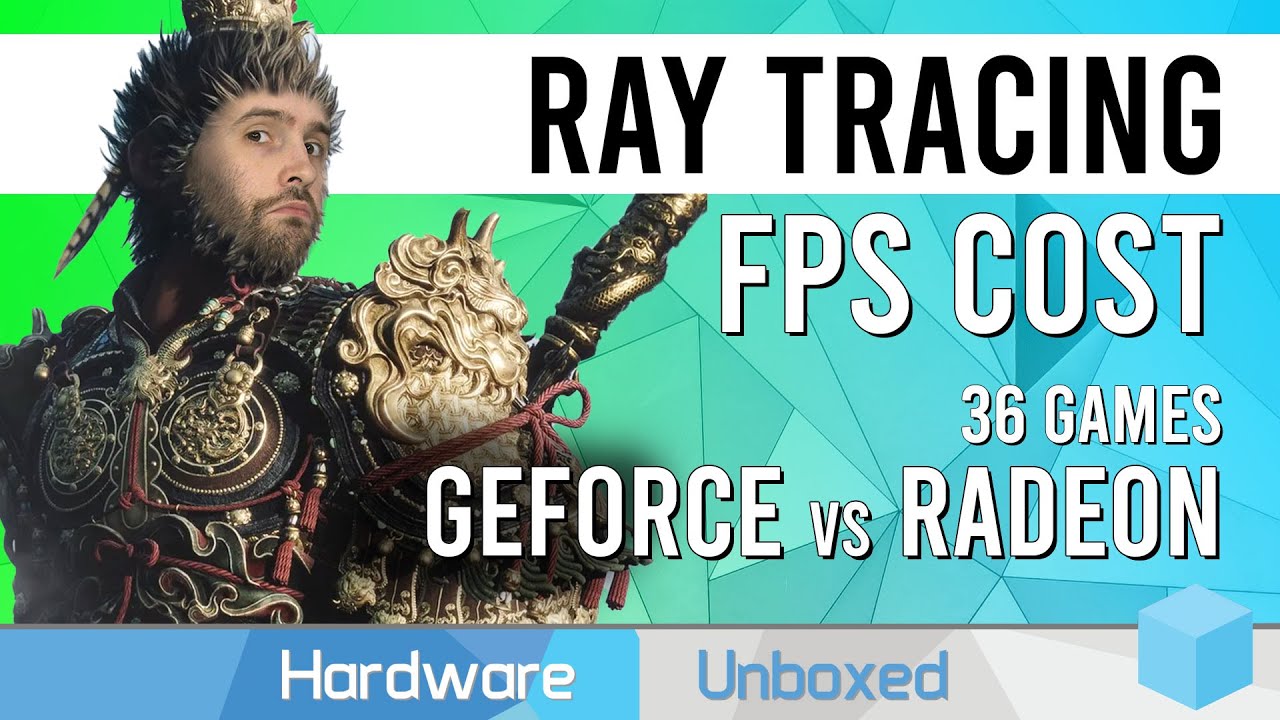The video analyzes the performance impact of ray tracing on Nvidia and AMD GPUs across 37 games, highlighting that while some titles offer significant visual enhancements, others do not justify the notable performance drops associated with enabling ray tracing. It concludes that the decision to use ray tracing should depend on individual preferences for visual quality versus performance, with Nvidia’s GPUs generally outperforming AMD’s in this regard.
The video explores the performance impact of ray tracing on both Nvidia and AMD GPUs, specifically focusing on 37 games to determine whether the visual enhancements justify the performance costs associated with enabling ray tracing. The analysis begins by comparing the performance of the top GPUs from both brands—the Nvidia GeForce RTX 4090 and the AMD Radeon RX 7900 XTX—across various games, while also discussing the visual benefits that ray tracing can bring. The testing was conducted using a high-end system, emphasizing 4K gaming performance, with future videos planned to explore different resolutions and GPU tiers based on viewer interest.
The presenter discusses the overall performance costs of ray tracing, highlighting that some games deliver substantial visual improvements, while others do not justify the performance hit. For instance, in titles like Resident Evil Village and Gotham Knights, the visual benefits were minimal compared to the significant drops in frame rates—19% and 35% for the RTX 4090, respectively. The video emphasizes the importance of considering ray tracing in games where it genuinely enhances the visual experience, rather than in titles where its implementation is poor or negligible.
Throughout the analysis, specific games are examined in detail, showcasing varying performance impacts when ray tracing is enabled. For example, in Far Cry 6 and Battlefield 2042, the performance drops were relatively low, making it less impactful on gameplay. However, in more demanding titles such as Hitman 3 and Atomic Heart, the performance hit was substantial, leading to recommendations against enabling ray tracing due to the lack of noticeable visual improvements. This disparity in performance hit across games illustrates the inconsistency of ray tracing implementations in current titles.
The video also draws comparisons between Nvidia and AMD’s ray tracing capabilities, revealing that Nvidia’s GPUs tend to handle ray tracing more efficiently, often resulting in better visual quality with less performance sacrifice. The RTX 4090 generally outperformed the RX 7900 XTX by significant margins, particularly in games optimized for Nvidia hardware. The findings suggest that while AMD’s GPUs have made strides, they still lag behind Nvidia in ray tracing performance, especially in titles where the visual impact of ray tracing is more pronounced.
In conclusion, the presenter posits that the decision to enable ray tracing should depend on individual preferences regarding visual quality versus performance. For gamers who prioritize high-quality graphics and can afford the performance trade-off, enabling ray tracing might be worthwhile. Conversely, for those who prefer smoother gameplay or are playing on lower-end systems, the performance hit may not be justifiable. The video sets the stage for future analyses of ray tracing performance, including testing older GPUs and upcoming titles, while encouraging viewer engagement and support for continued independent analysis.
